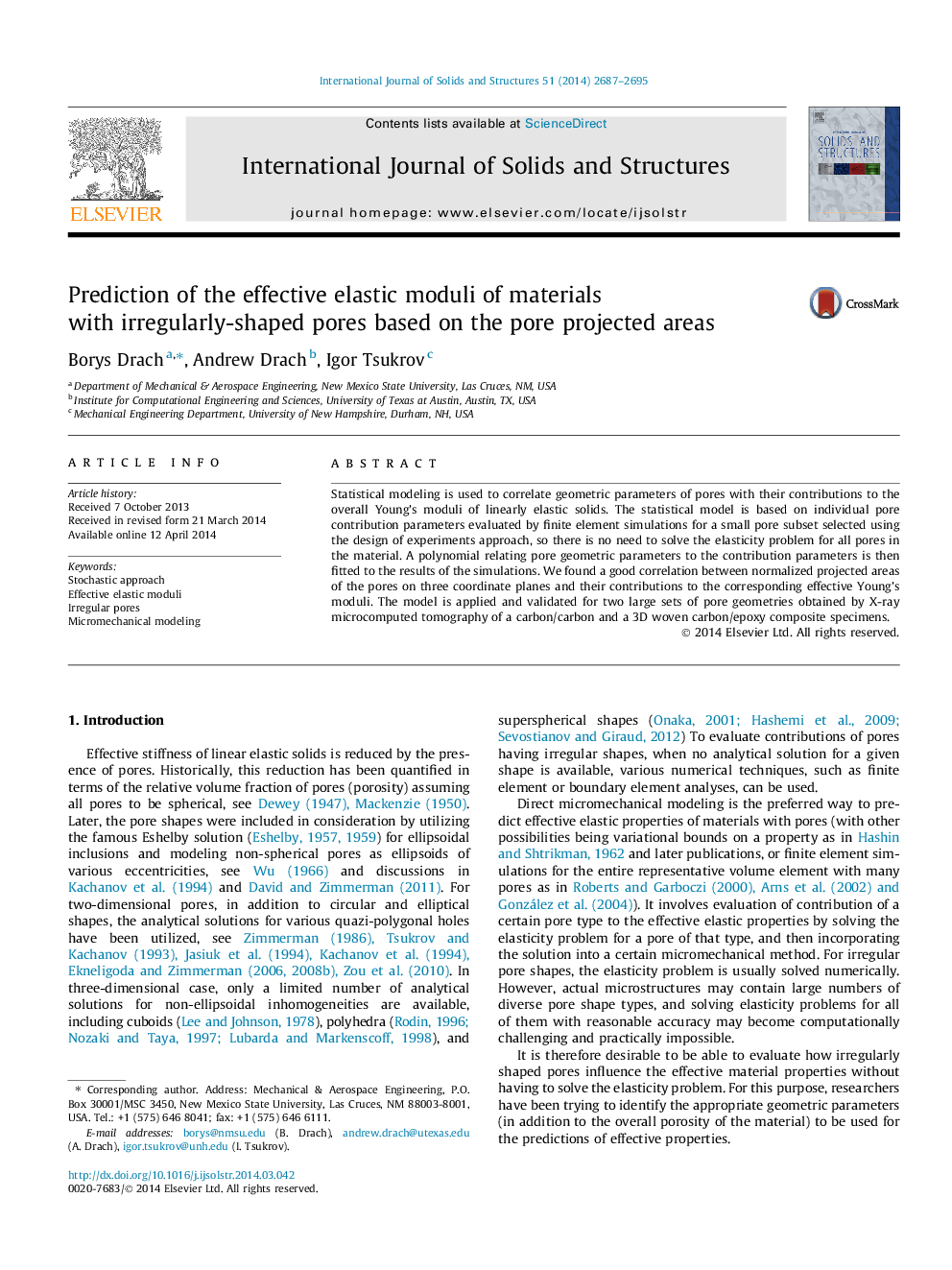| Article ID | Journal | Published Year | Pages | File Type |
|---|---|---|---|---|
| 277469 | International Journal of Solids and Structures | 2014 | 9 Pages |
•Statistical model correlating pore shapes with material effective moduli is proposed.•Normalized pore projected areas show good correlation with effective Young’s moduli.•The model is validated on pore microtomography datasets from two composite materials.•Model predicts effective properties for large arrays of pores from a few simulations.
Statistical modeling is used to correlate geometric parameters of pores with their contributions to the overall Young’s moduli of linearly elastic solids. The statistical model is based on individual pore contribution parameters evaluated by finite element simulations for a small pore subset selected using the design of experiments approach, so there is no need to solve the elasticity problem for all pores in the material. A polynomial relating pore geometric parameters to the contribution parameters is then fitted to the results of the simulations. We found a good correlation between normalized projected areas of the pores on three coordinate planes and their contributions to the corresponding effective Young’s moduli. The model is applied and validated for two large sets of pore geometries obtained by X-ray microcomputed tomography of a carbon/carbon and a 3D woven carbon/epoxy composite specimens.
